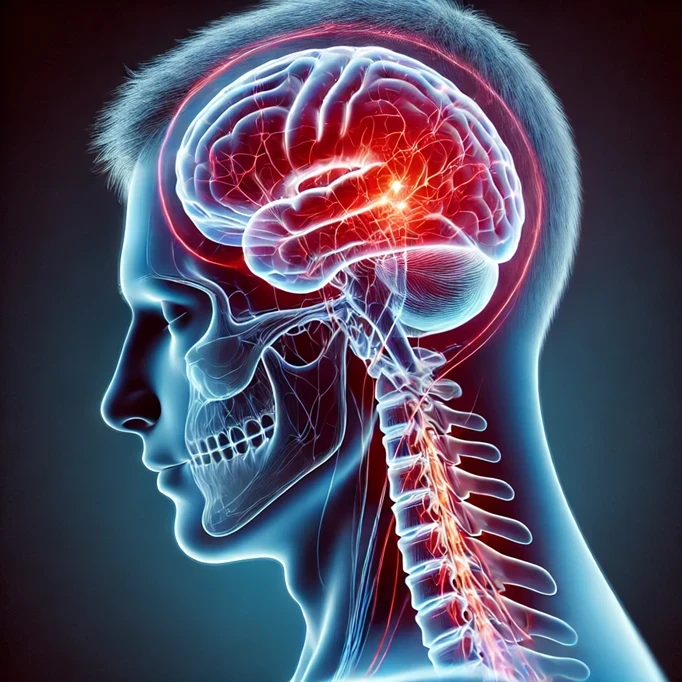The Impact of Atlas Misalignment on Coordination and Balance
If you’ve ever wondered, “Why do I feel off balance when I walk?” or “What causes coordination problems without injury?”, you’re not alone. Many people struggle with subtle or severe issues with balance, body awareness, or coordination that don’t seem to stem from any clear cause. For some, it feels like walking on a boat. For others, it’s missing steps on the stairs, or struggling to stay steady while standing still.
By downloading the Digital Patient Chart mobile app you can better control your patient portal.
One overlooked but powerful answer lies in the top of the neck—specifically, in a small but mighty bone called the atlas. The atlas (C1) is the top vertebra of the spine, and when it's misaligned, it can wreak quiet havoc on your nervous system’s ability to regulate balance and coordination. This article explains how atlas misalignment impacts balance, how it’s assessed, and how upper cervical chiropractic care—especially atlas adjustments—may offer a long-term solution.
What Is the Atlas Vertebra?
The atlas is the topmost vertebra in your spine, sitting just below the base of the skull. It’s named after the Greek titan who held the world on his shoulders—fitting, since the atlas supports the head and houses the brainstem's lowest portion.
When functioning correctly, the atlas allows for full head motion and helps protect critical neurological pathways between the brain and body. But if the atlas becomes misaligned, even slightly, it can interfere with vital nerve communication and blood flow between the brain, spinal cord, and inner ear.
How Does Atlas Misalignment Affect Balance and Coordination?
Patients often ask:
- “Can a neck misalignment cause dizziness or poor coordination?”
- “What does the atlas vertebra have to do with balance?”
- “Can upper cervical chiropractic help with balance problems?”
The answer to all of these is yes—and here's why.
Balance and coordination are controlled by a complex network of systems:
- The inner ear (vestibular system), which helps you detect motion and position.
- The eyes, which help orient you in space.
- Proprioception, your brain’s awareness of where your limbs are.
- The cerebellum and brainstem, which interpret these inputs and help you move accordingly.
The atlas vertebra surrounds and protects the lower brainstem, a critical hub where balance and motor coordination are regulated. If the atlas is out of alignment, it can put pressure on the brainstem, alter proprioceptive signals, and distort messages traveling to and from the brain. This often leads to symptoms like:
- Feeling unsteady on your feet
- Poor coordination, especially when turning or reaching
- “Veering” while walking
- General clumsiness
- Difficulty focusing your eyes while moving
- Feeling like you’re floating or swaying
What Causes Atlas Misalignment?
Atlas misalignment can happen due to:
- Whiplash or car accidents
- Sports injuries or falls
- Poor posture over time (especially forward head posture)
- Birth trauma or early childhood falls
- Repetitive strain (like prolonged tech or desk work)
The issue is that these misalignments don’t always cause immediate neck pain—so many people never think to check the top of the spine when they experience balance issues. They visit ENT specialists or neurologists, undergo countless tests, or are told their symptoms are “in their head,” when the problem may be structurally based.
Common Questions People Search
People experiencing these issues often turn to Google with questions like:
- "Why do I feel dizzy or unsteady every day?"
- "Who adjusts the atlas bone near me?"
- "Can chiropractic help with walking straight?"
- "Upper cervical chiropractor for balance issues in Hiawatha"
These are the kinds of questions that upper cervical care was built to answer.
What Is Upper Cervical Chiropractic?
Upper cervical chiropractic care is a specialized branch of chiropractic that focuses exclusively on the top two bones of the neck: the atlas (C1) and axis (C2). Unlike traditional chiropractic, which often uses manual full-spine adjustments, upper cervical chiropractors use precise imaging and advanced techniques to gently realign the upper neck—without twisting, cracking, or popping.
Techniques may include:
- Infrared Thermography – to measure nerve interference
- Advanced 3D Imaging – to visualize misalignment with pinpoint accuracy
- Atlas-specific techniques like Advanced HIO (Hole-In-One)
The goal is to restore proper brain-to-body communication by removing pressure from the brainstem, allowing the nervous system to function more efficiently.
What Improvements Might You Notice?
When upper cervical alignment is restored, patients often report:
✅ Improved balance and spatial awareness
✅ Less dizziness or vertigo
✅ More fluid and coordinated movement
✅ Better posture and head alignment
✅ Reduced clumsiness or instability
✅ Greater energy and mental clarity
And for many, the change doesn’t just affect walking—it improves their confidence, sleep, focus, and daily function.
What to Expect from an Upper Cervical Exam
When patients visit our office wondering, “Can you help with balance or dizziness?”, we start with a detailed consultation and nervous system evaluation.
Your first visit may include:
- Postural analysis and movement assessments
- Digital infrared thermography to detect spinal imbalance
- 3D imaging to measure the exact position of your atlas
- A personalized correction plan based on your specific needs
This isn’t a “one-size-fits-all” approach. Every adjustment is calculated and custom to your anatomy.
Upper Cervical Care in Hiawatha and the Cedar Rapids Area
We see patients from all over Iowa—Cedar Rapids, Marion, Coralville, Davenport, and beyond—who have exhausted other options and are looking for something different. Many were told there was no physical cause for their imbalance or coordination issues. Once we identified and corrected the misalignment, they experienced significant change.
If you’re Googling:
- “Atlas chiropractor near me for balance problems”
- “Upper cervical adjustments for dizziness Cedar Rapids”
- “Why do I feel off when I walk?”
- “Upper cervical care in Hiawatha”
…you’re already on the right track.
FAQs About Atlas Misalignment and Balance
Can atlas misalignment cause vertigo and dizziness?
Yes. Misalignment at the C1 level can disrupt vestibular input and brainstem function, both of which affect balance.
Is it safe for seniors or people with previous injuries?
Absolutely. Upper cervical care is gentle, non-invasive, and safe for all ages—even if you've had surgery or other health complications.
How long until I feel results?
Some patients notice change after the first correction. Others improve steadily over weeks. Consistency is key.
Final Thoughts: Balance Starts at the Top
If your world feels “off,” your body might be trying to tell you something. The atlas may be misaligned—and it could be interfering with your brain’s ability to coordinate your movement and maintain equilibrium.
Don’t wait until a fall, injury, or deeper frustration pushes you to act. Upper cervical chiropractic care offers a safe, effective way to restore balance by correcting the source—your atlas.
Serving Hiawatha, Cedar Rapids, and Surrounding Iowa Communities
We’re proud to help patients across Iowa find relief, regain control, and walk with confidence again—naturally. If you’ve been wondering who can adjust the atlas near you, we’re here to help.
Book a consultation today and take your first step toward better balance, better movement, and better living.







Leave a comment